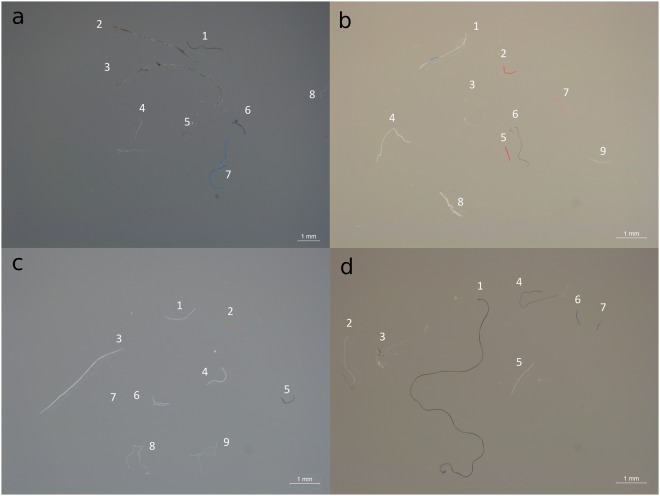Figure 1.
Photographs of representative marine microdebris in juvenile coral trout. Marine microdebris was detected in the gastrointestinal tract of 20 individual juvenile coral trout (Plectropomus leopardus and P. maculatus) collected on reefs around (a) Lizard Island, (b) Orpheus Island, (c) Heron Island, and (d) One Tree Island, in the Great Barrier Reef World Heritage Area, Australia, in 2011. Examples of chemical type assignments for marine microdebris include: (a) semi-synthetic: cellulose-derived (4), NFPC: nylon (5); naturally-derived: cellulose-natural (1, 6, 7); (b) semi-synthetic: cellulose-derived (1, 2, 3, 5, 6), NFPC: nylon (8); naturally-derived: cellulose-natural (7), keratin (4); (c) synthetic: polyester (8); semi-synthetic: NFPC: nylon (5, 6), NFPC: polyester (1); naturally-derived: cellulose-natural (2, 3, 9); (d) semi-synthetic: cellulose-derived (6), NFPC: nylon (5), NFPC: polyurethane (1); naturally-derived: cellulose-natural (4, 7), keratin (3). For the following items, natural origin (a2, a3, a8) or contamination (b9, c4) could not be ruled out. Chemical type was not assigned to fibre c7 (fibre was missing) and d2 (<60% match). NFPC = natural fibre reinforced polymer composites.

